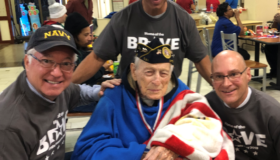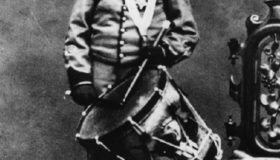Buffalo Soldiers: Trailblazers of Honor, Courage, and Country
July 26, 2025
In the golden light of early morning, deep in the heart of Sequoia National Park, a trail winds beneath towering trees. Few realize that over a century ago, this very path was carved by horseback soldiers in blue uniforms—African American men with courage in their hearts and history at their heels. They were the Buffalo Soldiers—and their legacy is one of strength, service, and trailblazing triumphs that continue to inspire generations.
A Legacy Rooted in the Civil War
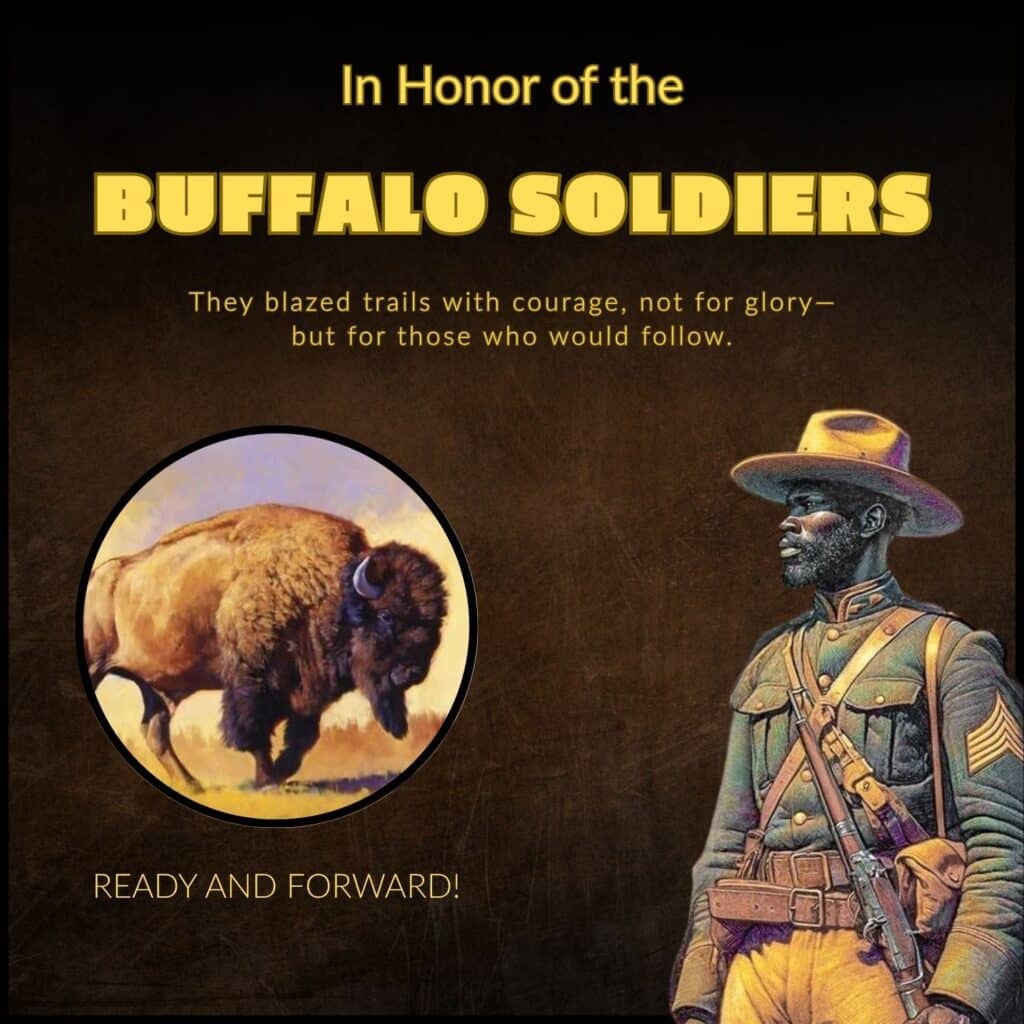
During the American Civil War, more than 180,000 African American men served in the Union Army, organized into regiments known as the United States Colored Troops (USCT). These soldiers fought in key battles, guarded supply lines, and served with exceptional valor—despite being paid less and often given the most dangerous assignments. Their courage helped turn the tide of the war and paved the way for future Black military service.
When the war ended in 1865, the bravery of the USCT laid the foundation for the formation of permanent all-Black regiments—the Buffalo Soldiers—just one year later in 1866.
The Civil War may have ended the institution of slavery, but the soldiers who helped win that freedom continued to fight—not just for liberty, but for opportunity and honor.
From the Frontier to Foreign Shores
Once officially formed, the Buffalo Soldiers were assigned to some of the most remote and rugged regions of the American West. They faced harsh conditions, long deployments, and constant challenges—but they rose to every occasion.
Key Conflicts and Campaigns:
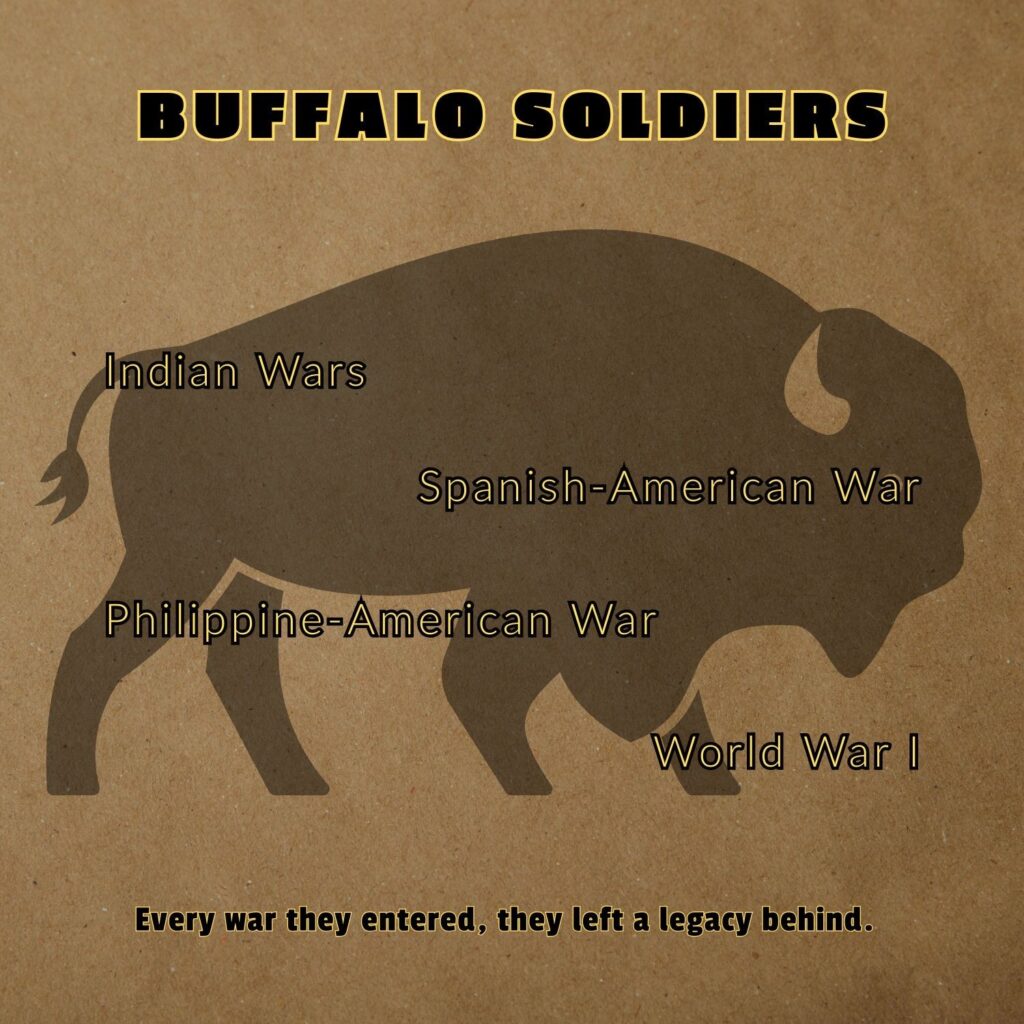
- Indian Wars (1866–1891): Buffalo Soldiers protected frontier settlements, built roads and forts, escorted mail carriers, and engaged in dozens of skirmishes. During this time, 18 African American (14 from Buffalo Soldier regiments, 4 Black Seminole Indian Scouts) earned the Medal of Honor.
- Black Seminole Indian Scouts, though not official cavalry or infantry, were assigned to and worked directly with Buffalo Soldier units. The U.S. Army treated them as key partners in frontier service.
- Spanish-American War (1898): They fought bravely alongside Teddy Roosevelt’s Rough Riders in Cuba, most notably at the Battle of San Juan Hill, where their courage helped secure a pivotal victory. For one daring rescue mission under relentless fire, four Buffalo Soldiers were awarded the Medal of Honor for saving their wounded brothers in arms.
- Philippine-American War (1899–1902): Buffalo Soldiers served overseas, helping to stabilize regions and carry out peacekeeping operations.
- World War I: Though often relegated to support roles, some served in combat under French command and earned foreign decorations for valor.
World War II: A New Chapter of Service
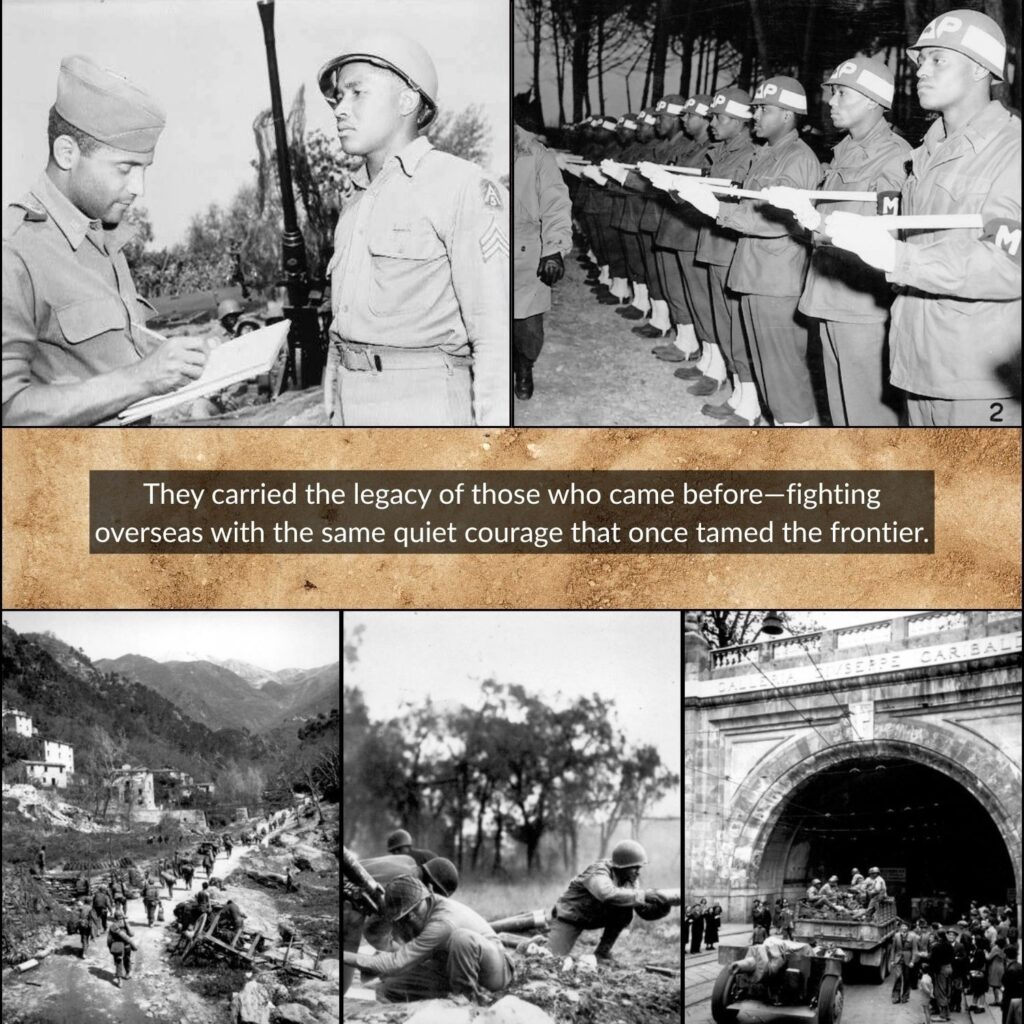
By the time World War II broke out, the original Buffalo Soldier units had been reorganized—but their legacy lived on.
African American soldiers continued to serve in segregated units, including:
- The 92nd Infantry Division, also known as the “Buffalo Division,” which fought in the Italian Campaign.
- The 93rd Infantry Division, which served in the Pacific Theater.
Though these soldiers weren’t officially called “Buffalo Soldiers” in the same way their 19th-century predecessors were, their spirit of determination and excellence remained. Just like their forebears, they faced the challenges of the battlefield—and rose above them. Many WWII veterans from these units credit the earlier Buffalo Soldiers for laying the groundwork of professionalism, pride, and courage they aspired to emulate.
America’s First National Park Rangers

One of the most beautiful chapters of the Buffalo Soldiers’ story isn’t about war—it’s about peace. Before the National Park Service was created in 1916, the U.S. Army was responsible for protecting America’s national parks. From 1899 to 1904, Buffalo Soldiers—especially from the 9th and 10th Cavalry—were assigned to guard and maintain parks like Yosemite, Sequoia and General Grant (now Sequoia and King’s Canyon).
They became some of the first official park rangers in American history. Their contributions went far beyond patrols. They:
- Built over 100 miles of roads and trails
- Erected park buildings and infrastructure
- Prevented wildfires and poaching
- Protected wildlife
- Educated campers and promoted respectful access to public lands
- Maintained trail systems and park boundaries
Their devotion to the land helped shape the foundation of today’s national park system.
Though Smokey Bear would later become the face of wildfire prevention, the Buffalo Soldiers were already living out that mission decades before—with shovels, saddles, and unwavering resolve. Their efforts embodied values that still guide conservation today: protection, responsibility, and stewardship.
In a way, every forest Smokey protects still echoes with the hoofbeats and hard work of those first backcountry heroes.
Colonel Charles Young: Soldier. Scholar. Steward.
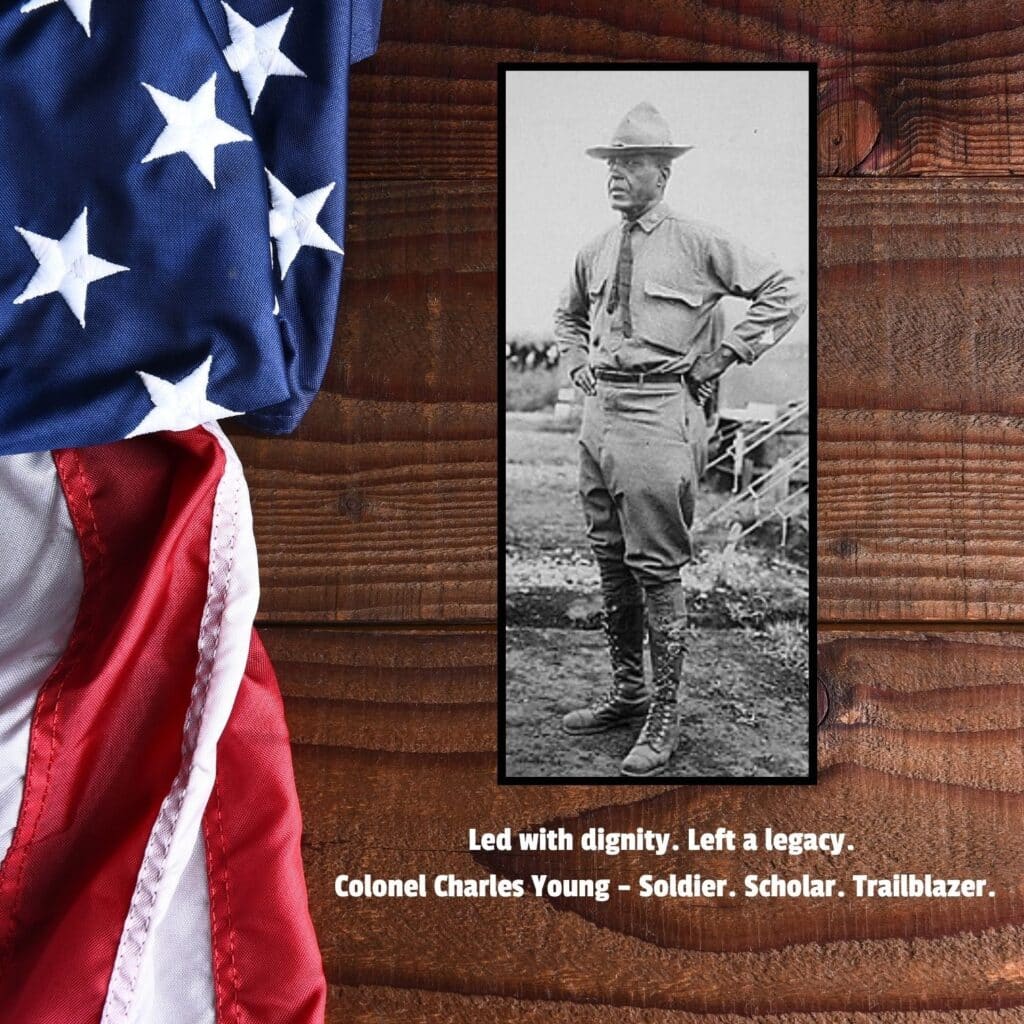
Among the most inspiring figures of the Buffalo Soldiers is Colonel Charles Young. Born into slavery in 1864, he became the third African American graduate of West Point and went on to a storied military career.
In 1903, he led the 9th Cavalry in building roads and trails in Sequoia National Park. As acting superintendent of the park, Young became the first Black superintendent of a national park. He served as attaché, professor, and commander—becoming the first African American Colonel in U.S. Army history. In 2022, he was posthumously promoted to Brigadier General—honoring a life of courage, integrity, and trailblazing service.
Famous Buffalo Soldiers Who Made History
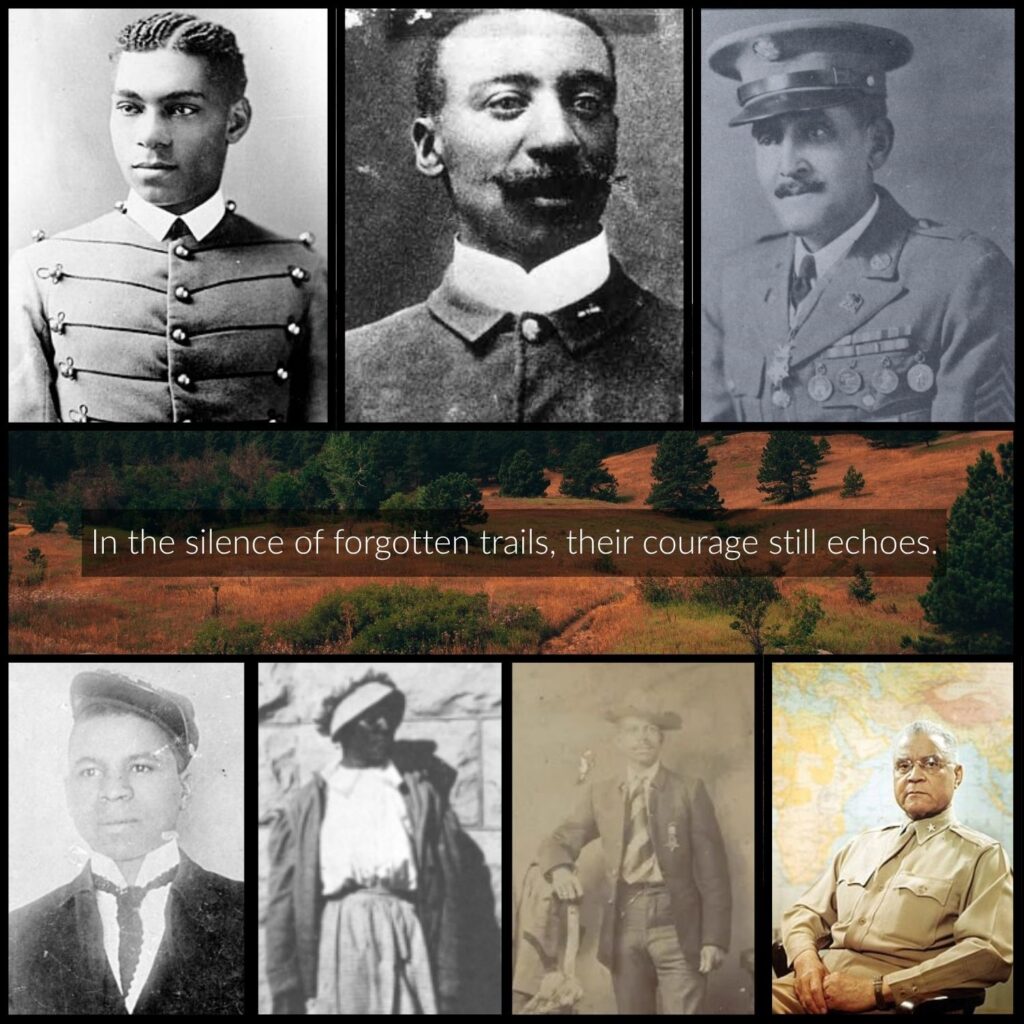
- Henry O. Flipper – First African American to graduate from West Point (1877)
- Benjamin O. Davis Sr. – Rose from enlisted ranks to become the first Black General in U.S. Army history
- Cathay Williams – Disguised herself as a man to enlist; the only known female Buffalo Soldier
- William H. Thompkins, Fitz Lee, Dennis Bell, and George Wanton – Awarded the Medal of Honor for their bravery during the Spanish-American War
These names shine like stars in the sky of American history—proof that valor knows no boundaries.
Buffalo Soldiers Day: Honoring Their Service
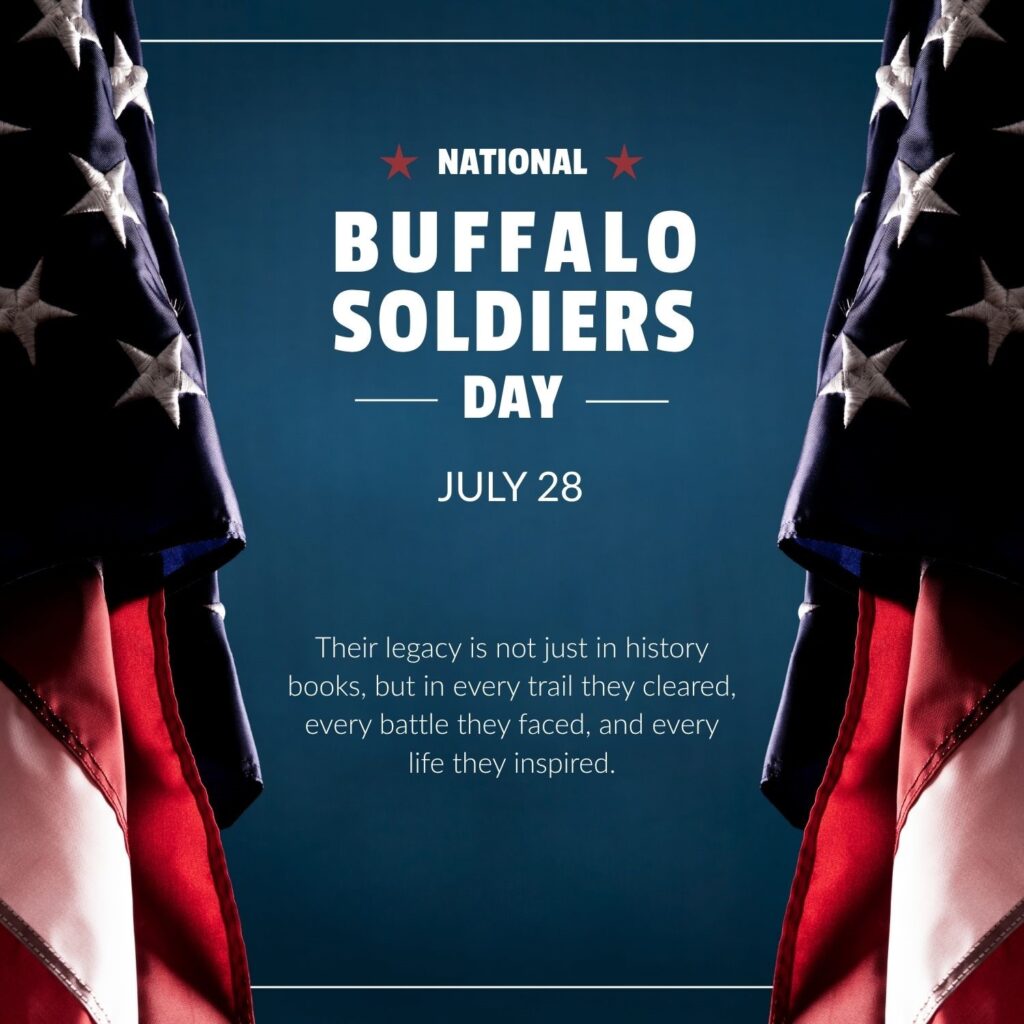
Each year on July 28, the United States observes Buffalo Soldiers Day in recognition of the formation of the first African American Army regiments in 1866. Signed into observance by President George H. W. Bush in 1992, the day honors the countless contributions of the Buffalo Soldiers across decades of service. It’s a time to reflect on their courage, sacrifice, and legacy—both on the battlefield and beyond. Whether through educational events, memorial ceremonies, or visits to historic sites, Buffalo Soldiers Day serves as a national reminder of the men who helped shape the nation through resilience and honor.
The Legacy Lives On
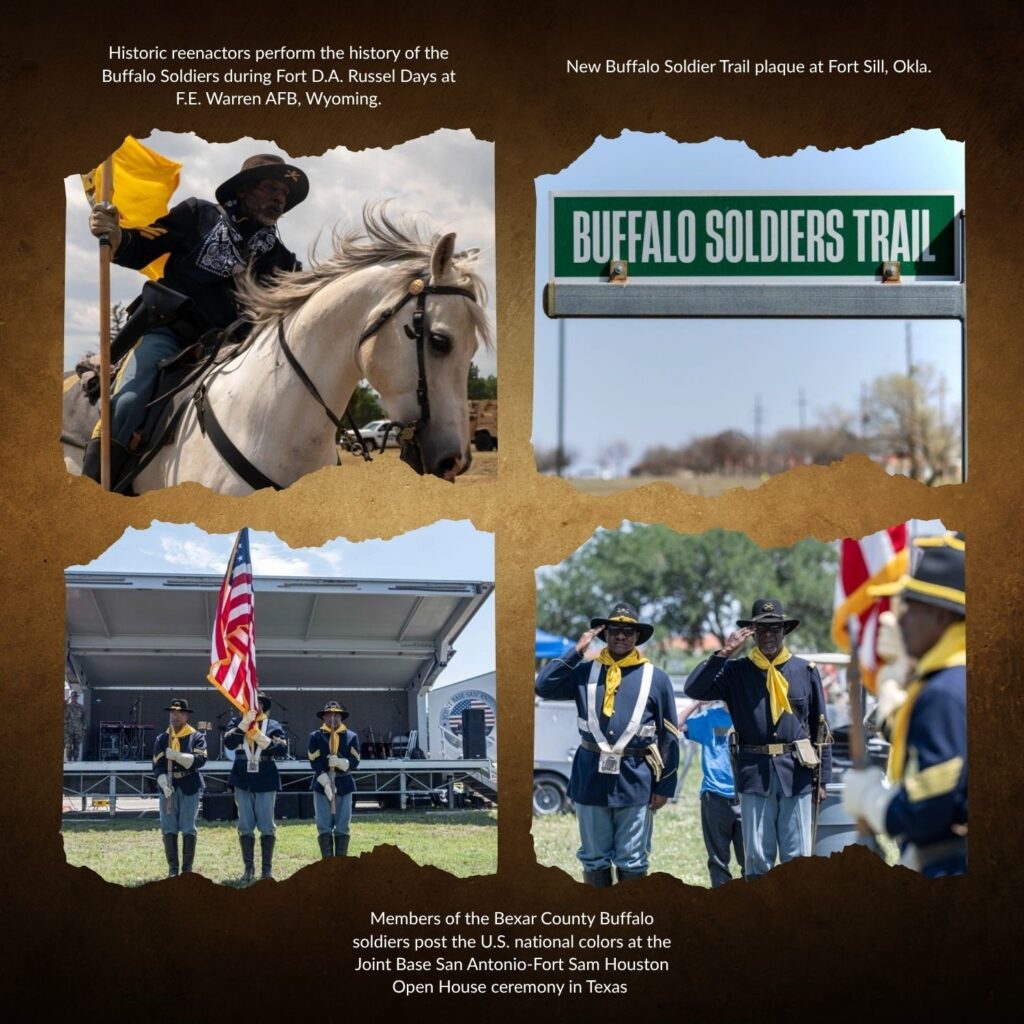
The Buffalo Soldiers left behind a legacy of:
- Service with dignity
- Leadership with purpose
- Patriotism with heart
Their example still resonates today in every soldier, ranger, firefighter, and citizen who strives to serve with purpose and pride.
From battlefield to backcountry, from dusty roads to forest trails—the Buffalo Soldiers carried a torch that still lights the way for future generations.
How to Honor Their Story Today
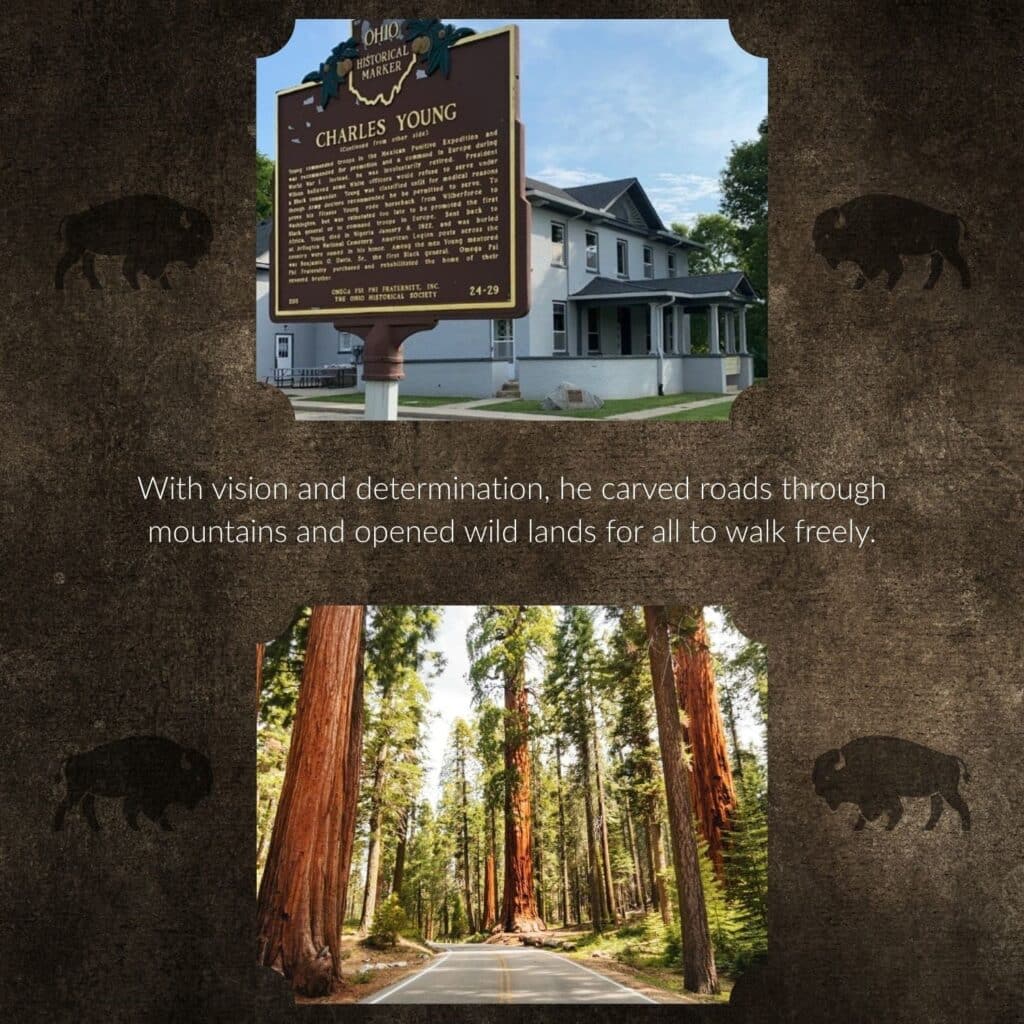
- Visit Sequoia National Park and hike the trails they built
- Explore the Charles Young Buffalo Soldiers National Monument in Ohio
- Share their stories on social media or in your classroom
- Support organizations that preserve military and park history
Let their story remind us all: heroes don’t just make history—they make it better.
About the Author

Mike Isaac-Jimenez is a 25-year U.S. Air Force Veteran transitioning into retirement in San Antonio, TX, and currently serving as a SkillBridge intern with Soldiers’ Angels. He holds a B.S. in Technical Management (Project Management) from Embry-Riddle Aeronautical University, along with A.A.S. degrees in Mechanical & Electrical Technology and Mechanical Engineering.
